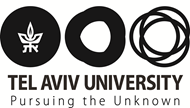Previous seminars of Strategic Management
| Date | Speaker/Affiliation | Presentation topic | Location/Time |
|---|---|---|---|
| 15 March 20165 |
Moshe Barach Berkeley |
Search, Screening, and Information Provision: Personnel Decisions in an Online Labor Market |
Room 305 14:00 |
| 7 April 2016 |
Christopher L. Tucci EPFL Lausanne |
Crowdsourcing and innovation |
Room 403 11:00 |
| 19 May 2016 |
Brian S. Silverman University of Toronto |
TBD | TBD |
| 31 May 2016 |
Ann Majchrzak University of Southern California |
Fostering knowledge co-creation to solve wicked problems with online crowds | TBD |
| 25 January, 2017 |
Prof. David Deeds University of St. Thomas |
Ability, Stigma and Entrepreneurship Abstract
We focus on international differences in perceived stigma associated with entrepreneurial failure. We set up a theoretical model designed to capture the notion that the population of entrepreneurs in any economy develops through time governed by a hurdle process with feedback. We argue that the height of these hurdles is determined by institutional and cognitive factors. Variation in these factors amongst countries leads to variation in the rate and nature of entrepreneurship. We illustrate the theory using agent-based simulation techniques. We find that the higher the perceived stigma associated with entrepreneurial failure in a nation, the lower average quality of the entrepreneurial pool through adverse selection. Conversely, through the same mechanism, we find that lower perceived stigma leads to higher average quality of the entrepreneurial pool.
|
Room 302 13:00 - 14:15 |
| 5 April, 2017 |
Prof. Valérie Moatti ESCP Europe |
Omni-Shoring as a Way to Coordinate R&D and Manufacturing to Preserve Innovation
Recent research argues that, when innovation is embedded into the process, R&D and manufacturing need to co-locate in the home country to secure current and future innovation (Pisano and Shih, 2012). While fashion has been shown to be a process-embedded innovation industry and thus an excellent candidate for re-location of manufacturing in home country, macro-economic data and anecdotal evidence do not confirm such trend. Based on this contradiction, our work uses an inductive approach on 18 European fashion firms to understand how firms manage the design-manufacturing coordination. The qualitative analysis reveals that there is a range of coordination strategies that are alternative to co-locating design and manufacturing in the home country: reducing distance, segmenting it and hedging against it. These strategies are often managed simultaneous and complement each other, evidencing “omni-shoring”.
|
Room 302 13:00-14:00 |
| 24 May, 2017 |
|
Boundary spanners and strategic processes : where are we and why research should care about these individuals |
|
| 7 June, 2017 |
Prof. Markus Reitzig University of Vienna |
What Makes the Right Contributor Tick? Skill-Based Sorting in Non-traditional Production Communities
We study how contributors to Open Source Software (OSS) projects – special cases of nontraditional production communities – self-select into projects, and how this affects project performance. Drawing on theory from personnel economics and strategic human resource management, we propose and empirically demonstrate that contributors sort on skill when they seek to sharpen their career profiles by engaging in non-for-profit work, and when they seek personal enjoyment from coding. They avoid sorting on skill when seeking to learn for their own benefit by engaging in a project. Tests are carried out on a custom-tailored original dataset merging observations from Stack Overflow and GitHub.
|
Room 301 13:00-14:00 |
| 14 June, 2017 |
|
Trifurcation of the labor markets in the Networked, Knowledge–driven, Global Economy
This conceptual, interdisciplinary paper will start with an introduction to the new, networked, knowledge-driven, global economy. The objective of this paper, using a narrative review of the economic, business, and management literature of labor markets and human capital, will be to negate the notion that we have, at present, one labor market for human capital, and will conjecture that we currently have (or are about to have) three autonomous markets for labor that are driven by different market dynamics and mechanisms. The three markets are identified as follows: routine labor, skilled labor, and talent. Each one of the markets will then be discussed, including future trends, issues, and remedies. This trifurcation of the labor markets is mostly the combined result of phase transition resulting from three major impetuses. The first is the effect(s) that technological revolutions have on the supply and demand of/for multidimensional skills of human capital. Second is the “winner take all” market structure enabled by the “industrial” economy’s framed legislation and social norms. The third impetus is the context (for the technological revolutions and the nature of the markets) of a networked global economy that is driven by knowledge developing at an acceler- ated pace. The narrative multidisciplinary literature review used was a modified version of the integrative literature review. The review confirmed that the three labor markets’ dynamics are to a considerable degree dissimilar and that legislat- ing, conducting monetary, and fiscal policies that treat them as one labor market could (and probably already does) cause more harm than good, resulting in destabilizing the labor markets (as indicated by the growing unemployment rate of the young generation worldwide) and by extension, the social fabric of the new economy (as indicated by the growing economic and educational inequality worldwide). The paper concludes with a framework of the three labor markets, followed by a summary, including the need for a new legal and social paradigm regarding labor and the need for a new formal model for value creation. Finally, the limitations of the study as well as potential research gaps are identified.
|
Room 302 13:00-14:00 |



